
Introduction
Getting CCGL
Download
Installation
Development Guide
Architecture
Performance
Gallery
Snapshots
Movies
Mesh Data Structure
Viewer
Topology
Cut Graph
Slicer
Double Cover
Homology Basis
Conformal Maps
Harmonic Map
Spherical Harmonic Map
LSCM
Holomorphic 1-Form
Integration
Harmonic 1-Form
Holomorphic 1-Form
Slit Map
Curvature Flow
Euclidean Ricci Flow
Poly Annulus Ricci Flow
Hyperbolic Ricci Flow
Yamabe Flow
Documentation
Reference Book
Acknowledgements
|
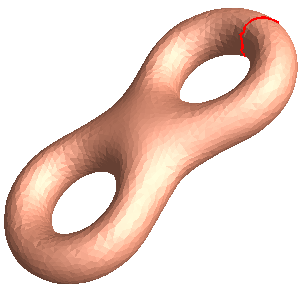
|
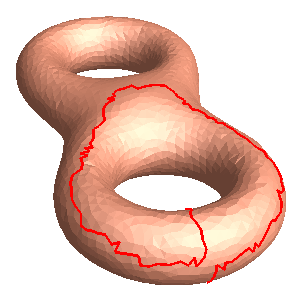
|
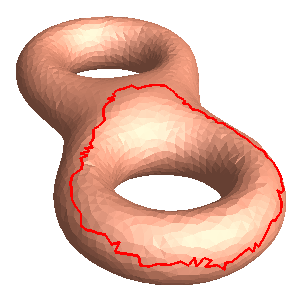
|
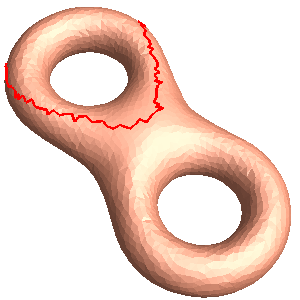
|
|
eight.open_0.m
|
eight.open_1.m
|
eight.open_2.m
|
eight.open_3.m
|
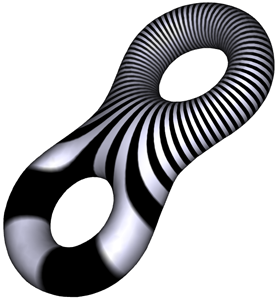
|
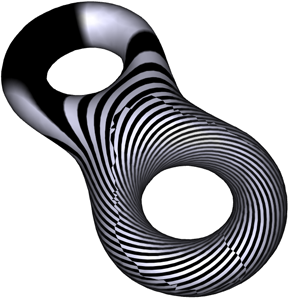
|
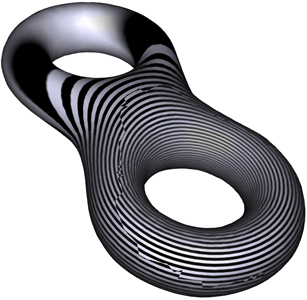
|
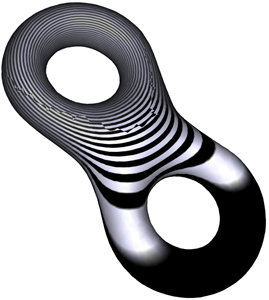
|
|
eight.u_0.m
|
eight.u_1.m
|
eight.u_2.m
|
eight.u_3.m
|
Algorithm Description
Harmonic 1-form algorithm computes harmonic 1-forms on a high genus closed surface. According to Hodge theory, each
cohomologous class has a unique harmonic form. The algorithm is linear.
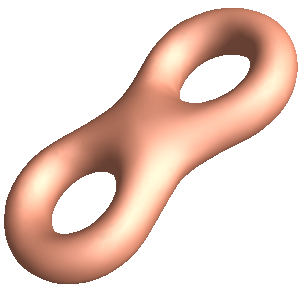
|
|
eight.m
|
Input and output
There are two input meshes:
- A high genus closed mesh, e.g. the genus two eight.m.
- The mesh is sliced open along a homology basis loop, e.g. eight.open_0.m.
There are two output mesh:
- The closed mesh with harmonic 1-form recorded as edge traits eight.w_0.m.
- The mesh cut along the homology basis with uv coordinates, which are obtained by integrating by the harmonic 1-form, e.g. eight.u_0.m.
Convergence, Stability and Efficiency
The computational process is stable and converges fast.
Example
The input genus two mesh has 7k faces. The computational time is about 2 seconds on a PC with 3.0 GB of RAM, 3.60 GHz CPU.
The data set and the source can be downloaded.
Command
- Compute the homology group basis:
homology.exe eight.m eight.open
This generates eight.open_0.m eight.open_1.m eight.open_2.m eight.open_3.m
- Compute the harmonic 1-forms:
harmonicform.exe eight.m eight.open_0.m eight_w_0.m eight.u_0.m
harmonicform.exe eight.m eight.open_0.m eight_w_1.m eight.u_1.m
harmonicform.exe eight.m eight.open_0.m eight_w_2.m eight.u_2.m
harmonicform.exe eight.m eight.open_0.m eight_w_3.m eight.u_3.m
|









